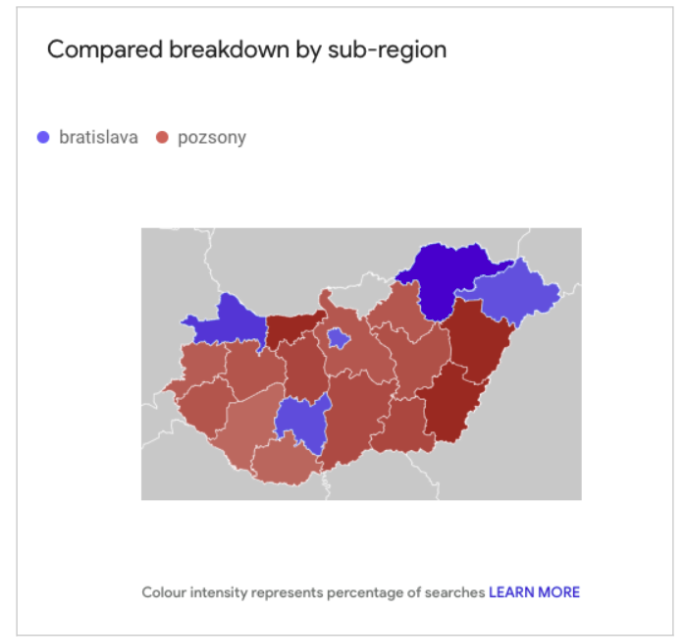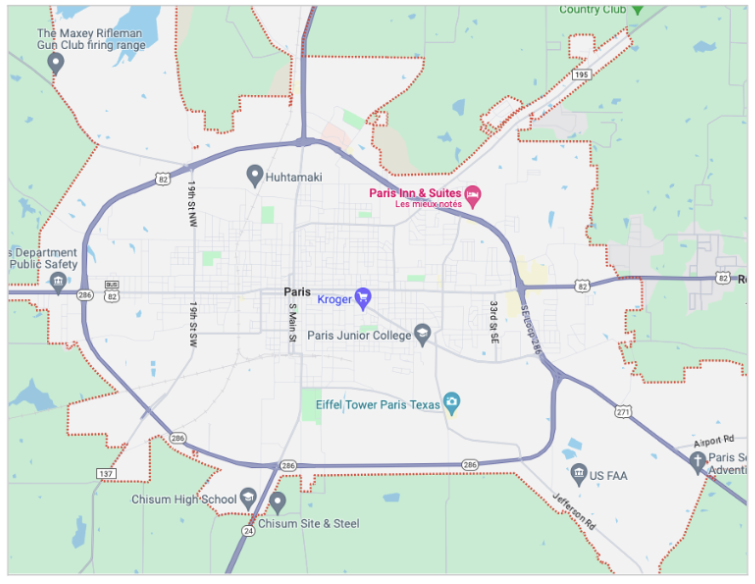You’ve no doubt heard of international SEO, or how to implement an optimization process to enhance a project’s SEO performance in multiple markets.
There are a number of actions involved in achieving this, such as carrying out a market and profitability analysis on the different markets you wish to target.
In this article, we’ll take you through the process (focusing solely on the architecture part) of launching new markets at Liligo.
The context
We’ll try to be brief, but setting the scene is important if you want to understand the context of our explanation.
Launched in 2006, the Liligo site compares travel offers such as flights, train tickets and car rentals. Despite the fact that the site has existed in several languages for many years, Liligo remains primarily a French venture, as this is where the majority of our revenue is generated.
In a few months’ time, we’re going to (re)launch some international versions of the site in order to diversify the geographical origin of our revenue and be less dependent on a single market.
The process we will describe in this article is the one we have partly followed. We naturally can’t mention all the steps we’ve taken.
Step 1: Creating a database
If you’ve ever worked for a client in the travel industry, you’ll know that most sales requests are geolocalized.
For example, if you’re looking for a train ticket on Google, you’ll probably search for one of the following:
| Request | Page positioned |
|---|---|
| Cheap train tickets | https://www.liligo.fr/trains |
| Train to Barcelona | https://www.liligo.fr/trains/espagne/barcelone |
| Train Paris Barcelona | https://www.liligo.fr/trains/itineraires/paris/barcelone |
Nothing that should really surprise you at this stage.
To create a coherent website structure, we need to have the most comprehensive country and city database possible, across all languages. The database will serve as the basis for everything else, including content creation.
Obtaining an extensive, high-quality database is not as simple as you might think. There are various options at your disposal.
Option 1: You already have a consistent database
In that case, you’re in luck and can move on to the next step.
Option 2: You have a database, but only in one language.
While most cities don’t translate from one language to another, there are many exceptions. Bratislava, for example:
| Language | Name |
|---|---|
| EN | Bratislava |
| HU | Pozsony |
Although in some parts of Hungary, Bratislava seems more popular than Pozsony, it would be more consistent to use the official name in the local language.

Source: Google Trends
If you would like to translate these locations, you have a few options:
GeoNames
GeoNames is a well-maintained community database. It’s not perfect, but it will help you easily retrieve the translations, in many languages, of geographical areas.
The main difficulty with this approach is linking your database with the GeoNames database to retrieve the translations. In our case, we used a formula based on location and name.
Using artificial intelligence
By using AI, it’s fairly simple to retrieve scaled translations via the OpenAI API, for instance.

In both cases, proofreading is required to ensure the quality of your database. A tedious, but necessary, task.
Option 3: You have nothing
In short…good luck!
In this case, start with GeoNames as a base and try to complement it with other local databases. For example, the French government has set up an API. Unfortunately, not all countries have such an interface.
Step 2: Keyword research
Let’s return to our table summarizing the pages we should have if we intend to compare train tickets in a given country. A service that will be increasingly in demand as the main European markets open up to competition (SNCF operates via OUIGO in Spain, for instance, but also offers direct connections from Paris to Barcelona).
| Request | Page positioned |
|---|---|
| Cheap train tickets | https://www.liligo.fr/trains |
| Train to Barcelona | https://www.liligo.fr/trains/espagne/barcelone |
| Train Paris Barcelona | https://www.liligo.fr/trains/itineraires/paris/barcelone |
To begin with, you need to identify the most common structures that users adopt for each of your typologies.
You can do this with a quick competitive analysis ( you can read more about the process here) and a little common sense.

Great, now all we need to do is extract the search volumes. One small problem, however: Liligo’s database currently consists of 46,135 cities.

This represents over two billion potential routes. You can limit your list based on :
- The presence (or absence) of a train station;
- The distance between the two cities;
- Your competitors.
Then all that’s left to do is extract the search volumes in the various countries of interest to you. To speed up the process, you can use DataForSEO to retrieve search volumes at scale.
By the end of this step, you should already know which routes are the most popular by country.
Just a reminder: several cities can have the same name. Let’s take Paris, for example. You have Paris, in France, but you also have Paris, in Texas. One of the challenges of this process is to know which is the “right” Paris when someone searches for “flight to Paris” from any given market.

Step 3: Defining pages
If we were to take a simplistic approach, we could decide to create pages for all routes with a small amount of search volume.
However, this is not as simple as it sounds. Firstly, CTRs in our industry are low (heavy advertising pressure + Google Flights for example) and we need to take this into account when creating pages. Don’t expect much from a page with a monthly search volume of 50 on its main keyword.
What’s more, all things considered, if you have an important brand – and links – in a given market, you’ll find it easier to position yourself in that market as opposed to a competitor.
In France, Liligo is the third most popular brand on the market. We can therefore position ourselves on the first page relatively quickly if we do things right. In other markets, the situation is quite different.
As a result, it’s important to get started with a more streamlined structure than the one we employ for the French market. This will help us optimize results in the short term.
[Ebook] International SEO: Part 2
Using search volumes, as well as our internal data, we defined a structure that covers 95% of the market in all aspects (search, but also other business data).
At the end of the process, don’t forget to ask the IT department (who will most likely be creating your pages) what information they need for the process.
In our case, we use a cityID to identify cities, and without this identifier, no page can be created. It is therefore present in all files throughout the entire process.

Step 4: Content creation
In our case, we already had content in French, which we decided to use as a basis for producing content in the other languages.
Even before having your content translated, carry out a localization study for each market. Content localization involves adapting content to the target market, it goes far beyond simple translation. It’s easy to assume that what works in one market will work in another when translated. However, taking this shortcut can get you into a lot of trouble.
During the content production phase, localization is the most crucial phase for SEO and, more broadly, for the coherence of your message. What do you need to define for your new market?
- Your keyword research by market: your main keywords in one market, once translated, are not automatically the right keywords in your target market. You will need to conduct keyword research for each market.
- The essential vocabulary defined by the marketing team so that the user understands the product or service. For example, at Liligo, we’re a “flight comparison service”, not a “travel agency”.
- The tone of voice in each language. In French, we don’t say “tu” to our users. In Spanish and Italian, it’s more common to use a more relaxed tone of voice to avoid sounding too distant.
- The specific features of your product or service in different markets. Content must be adapted to reflect these differences.
- Graphics, logos and visuals: In our case, the logos of airlines, car rental agencies and train companies, but also the visuals for our mobile application.
All of these elements contribute to the success of your content in your new markets. They make it easier for your new international users to be engaged and reassured by your content. It’s essential to involve marketing and content specialists who speak the language and understand the culture of your target market.
Step 5: After the launch
Once you’ve launched your site, you’ll need to monitor a number of indicators to assess the relevance of your approach and the content you’ve created:
- SEO indicators: indexation rate, impressions, traffic.
- Business indicators: sales figures and other metrics depending on your business model.
Business indicators are important when entering a new market. They allow you to quickly identify the pages on which you can generate a lot of traffic, but that don’t bring in a lot of revenue.
Liligo has this problem in some isolated cases in the French market, and knowing about them is essential to avoid prioritizing them for no reason. What’s the point of prioritizing a page that generates 73,000 sessions but generates only 200€ of revenue?

For traffic profitability, we recommend that you work with your SEA teams to ensure that your pages start to generate paid traffic.
After a few months, adjust your catalog of pages according to these various elements.
The key points to remember
Targeting a new market may seem like a straightforward task, but this process, which is only part of what your team will have to do, can already take longer than expected depending on the data you have available.
Get ready beforehand
Spend time beforehand documenting the various stages of the process to avoid surprises (although there will inevitably be some), and don’t underestimate the workload that awaits you.
Be methodical in your approach
Be organized and meticulous when it comes to implementing the above steps. Each step of the process is as important as the next, so take your time and don’t make the mistake of trying to skip steps.
Monitor, adjust and repeat
Like any major SEO process, there’s no such thing as an exact science. Once you’ve implemented your new strategy, keep monitoring its performance. If something needs to be changed, test a new approach and continue to monitor it.


